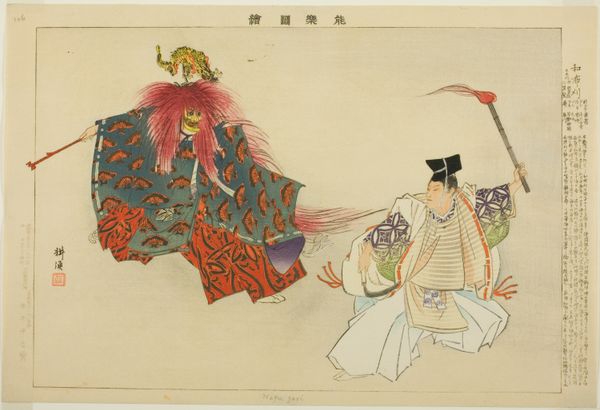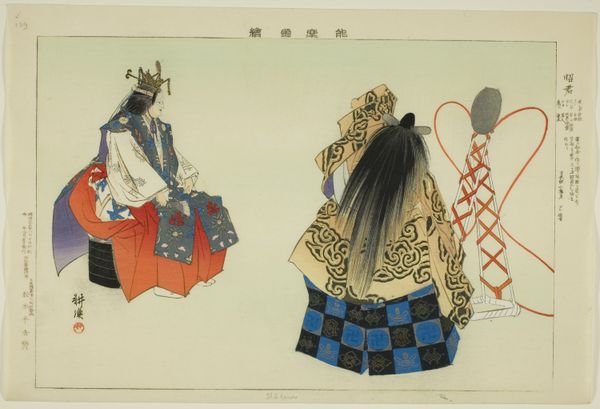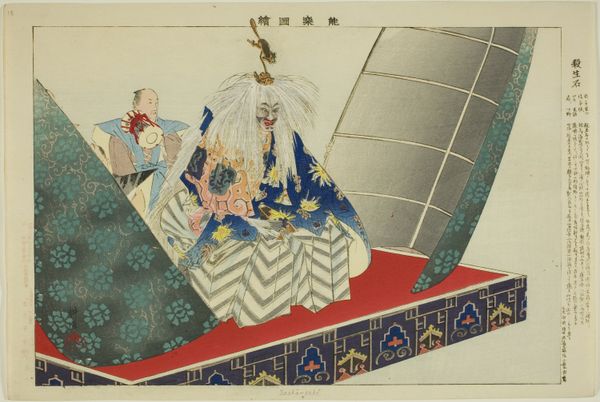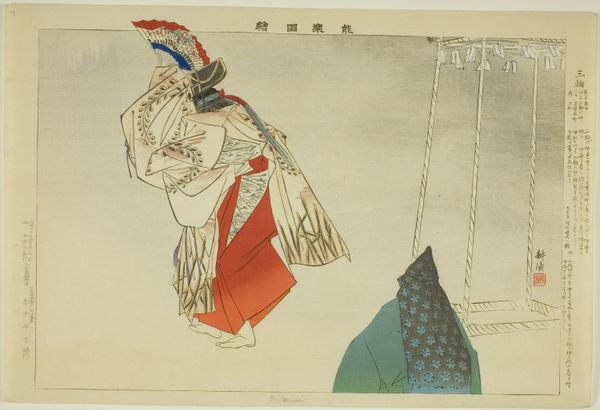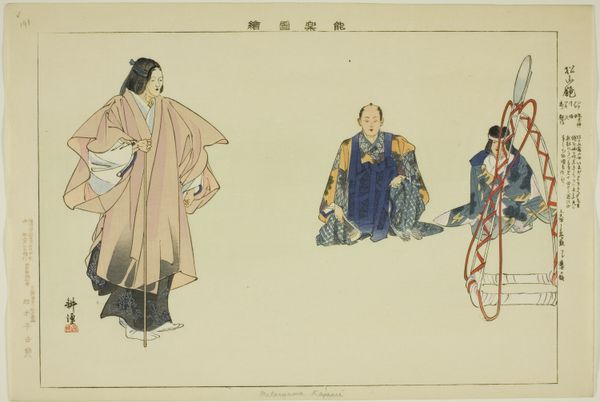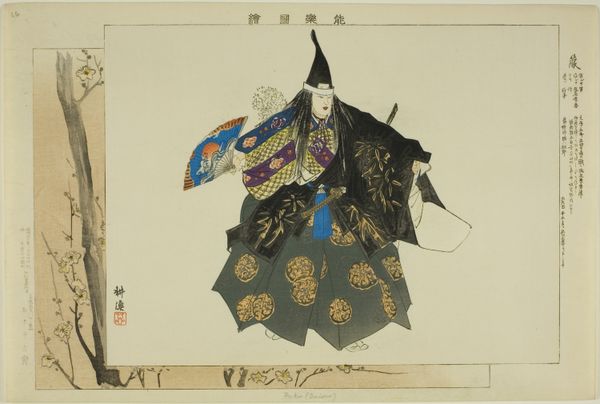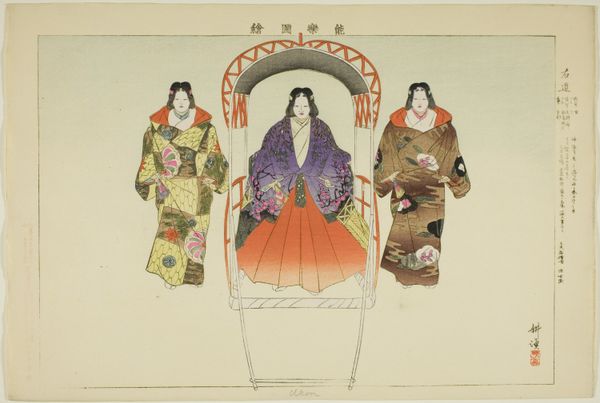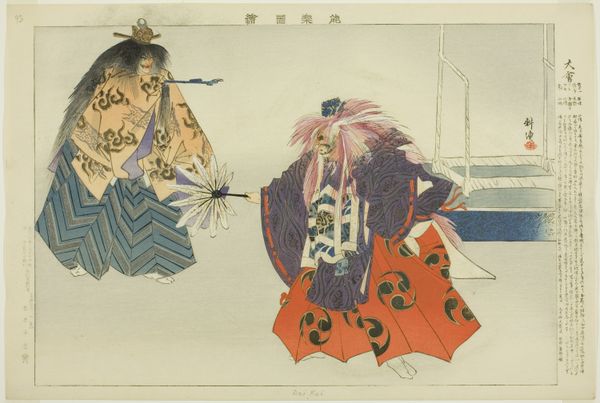
Ikari-Kazuki, from the series "Pictures of No Performances (Nogaku Zue)" 1898
0:00
0:00
Dimensions: Approx. 25.2 × 37.4 cm (10 × 14 4/3 in.)
Copyright: Public Domain
Curator: Here we have "Ikari-Kazuki, from the series "Pictures of No Performances (Nogaku Zue)"," a woodblock print on paper crafted in 1898 by Tsukioka Kôgyo. Editor: The immediate impact is quite theatrical. The central figure, brandishing what appears to be a sword, commands attention, doesn’t he? But there is also a stark stillness, an ethereal quality. Curator: Yes, these works depicted popular No theatre productions, reflecting specific moments and character archetypes of this form. The textures of the ink and the deliberate composition draw our eye into its layered representations. Let’s think about the labour-intensive nature of woodblock printing at the time... Editor: Beyond labor, there’s a fascinating intersection of class, gender, and power at play in representations of figures from traditional theater in Japanese culture, especially concerning roles of men and women on stage. These productions are heavily coded! Who had access to them, who participated, and what sort of power dynamic it evokes are significant questions that this print urges. Curator: Indeed. This was an exercise of looking at these art forms by referencing other pre-existing and related artistic traditions. Kôgyo wasn't creating images of entirely new kinds of theater but highlighting and giving visibility to practices of cultural transmission. Editor: The print begs a critical understanding. The positioning of figures – that solitary, poised actor and the observers behind him— speaks to more than stage presence, it’s also the power of perspective, visibility and who is deemed worthy of being seen, even now, after more than a century of representation, transmission and consumption. Curator: The meticulous execution, inherent to the Ukiyo-e tradition, combined with Kôgyo's particular skill in capturing textures, elevates the piece far above a mere representation of performance. Editor: Exactly! It prompts us to look not just at the visual information presented, but to excavate its historical framework, the cultural significance it embodies, and how that informs present realities. Curator: A thoughtful summation! Thinking about how materiality contributes to wider discourse surrounding accessibility of art, class and labour allows for this kind of reflection. Thank you for these layers of context. Editor: A welcome thought! It underscores the lasting impact and relevance this work retains when observed from diverse points of view.
Comments
No comments
Be the first to comment and join the conversation on the ultimate creative platform.

